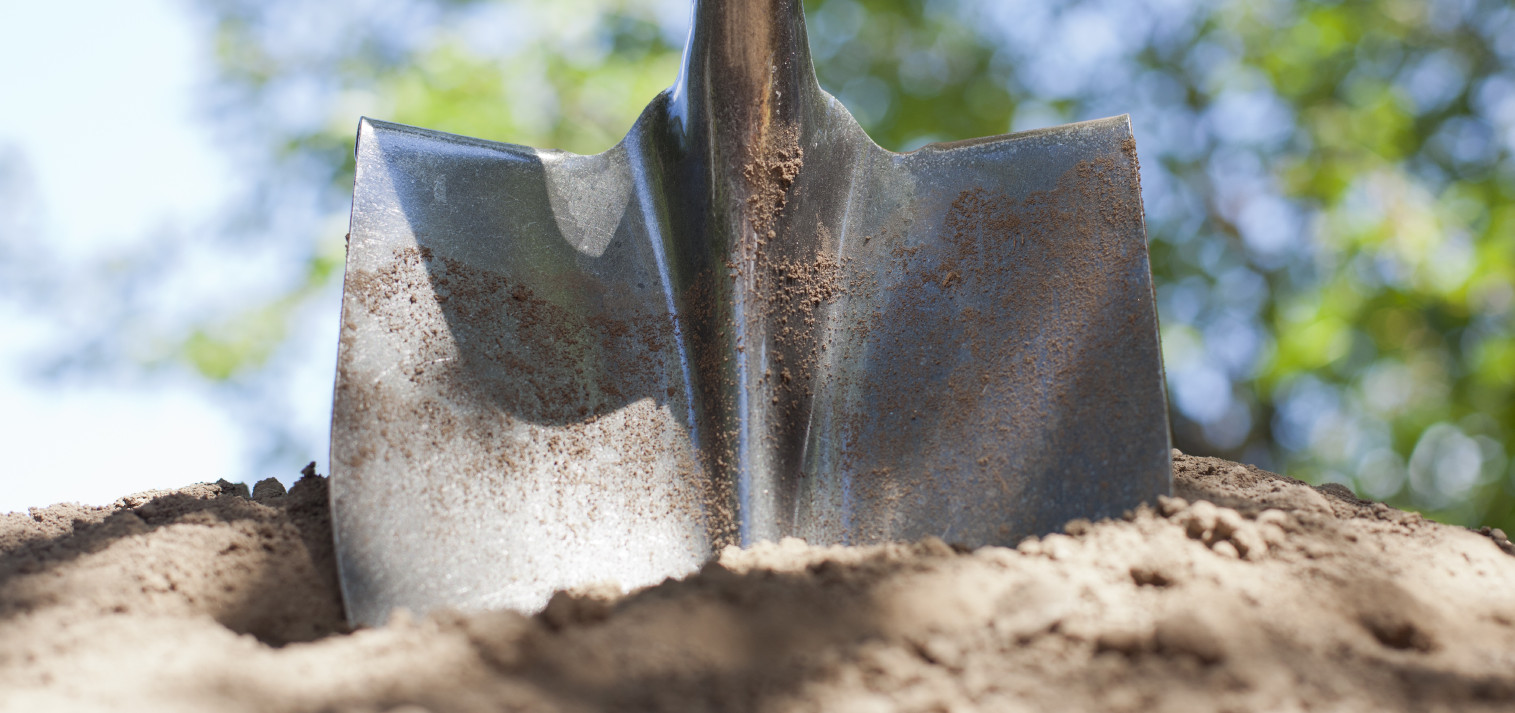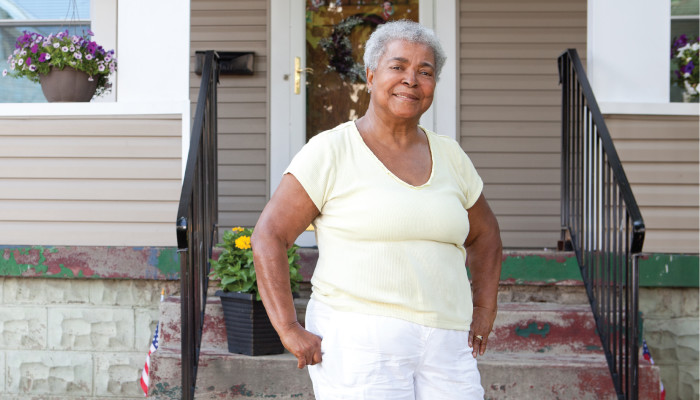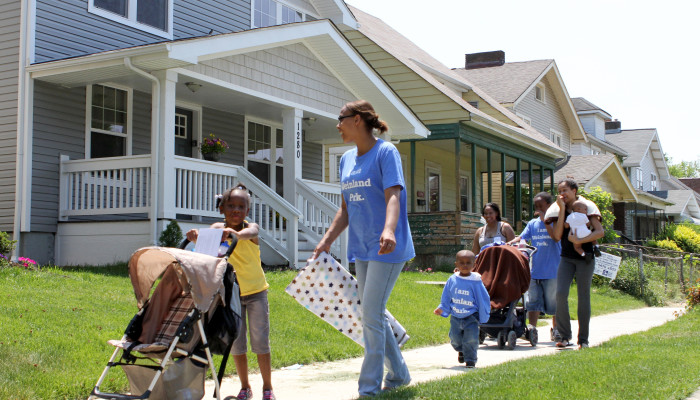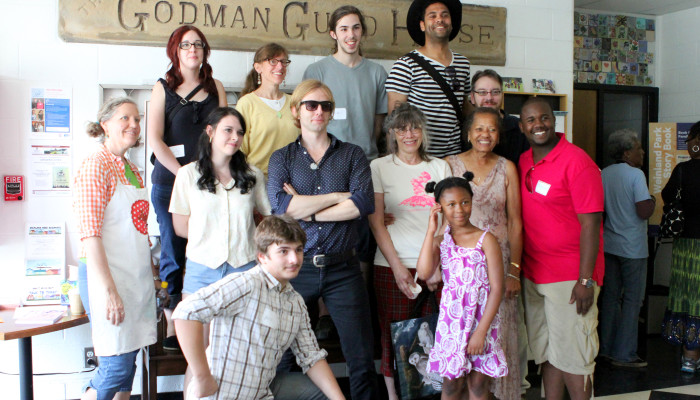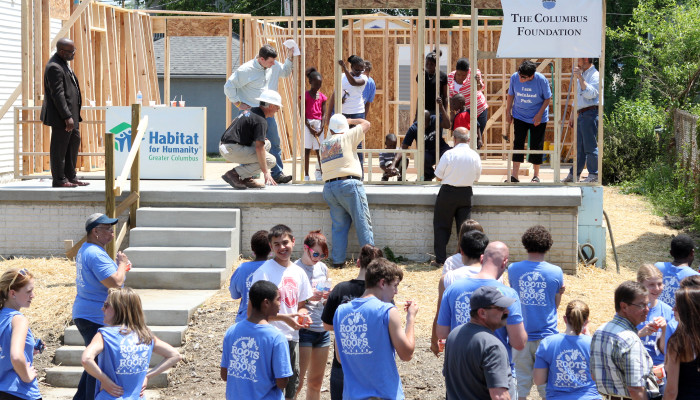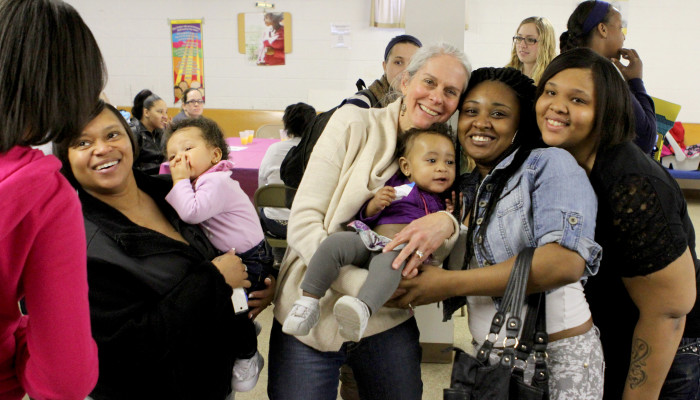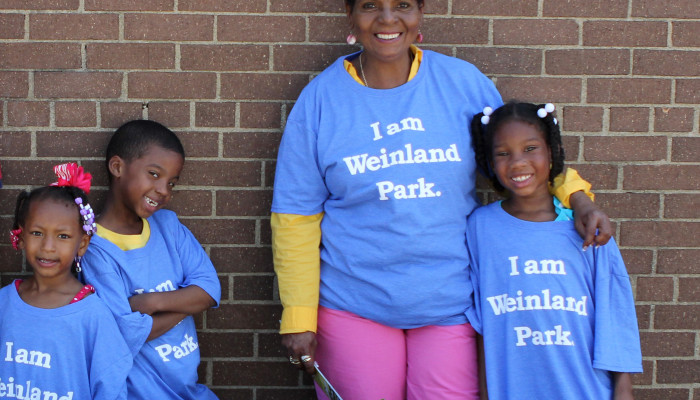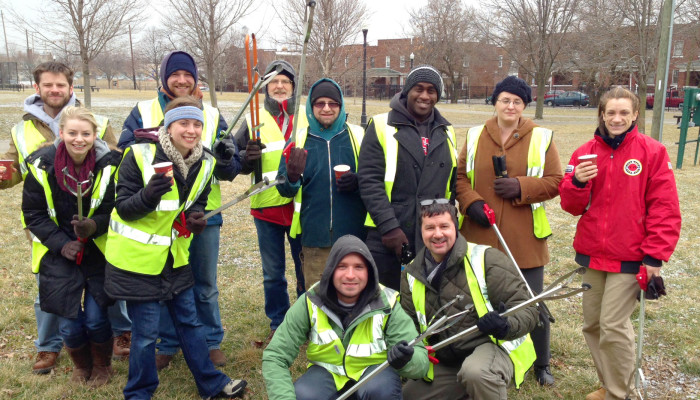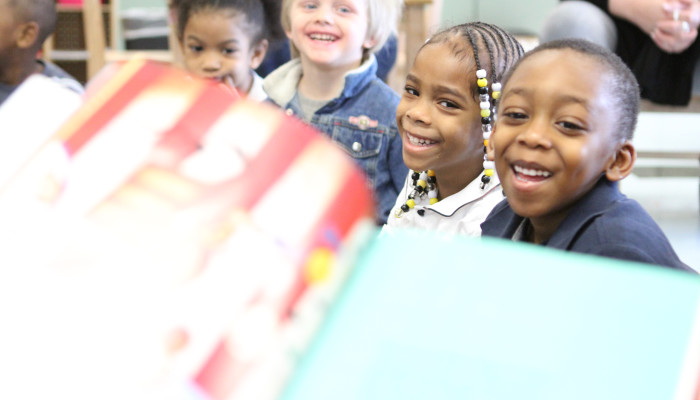Aneighborhood is defined by more than streets on a map. There’s a pulse that beats through it — a sense of belonging that connects individuals, families, and businesses. Columbus, Ohio, is a rapidly growing city of 835,000 with more than 300 diverse neighborhoods that range from restored historic districts to vibrant newly built neighborhoods on the city’s periphery, and distressed urban neighborhoods struggling with the effects of decades of decay. One neighborhood with a unique story and long history as a mixed income and racially integrated neighborhood is Weinland Park.
Initially developed in the 1890s along streetcar lines north of downtown, Weinland Park is a densely populated neighborhood just southeast of The Ohio State University that reached a peak population of 8,500 in 1950. After the 1950s, however, the neighborhood struggled with high crime, unemployment, and concentrated poverty, resulting in several decades of declining population of approximately 50 percent by the year 2000.
Today, the neighborhood is on the rebound. After decades of population decline, the neighborhood is once again gaining residents and crime rates have fallen by more than half. The current neighborhood includes a large population of college students, low-income families, seniors, and young professionals who together have created an incredibly active and participatory civic association. For the past decade, the neighborhood has enjoyed a high level of resident engagement around dozens of resident-led projects, such as a community festival, sports programs, and beautification projects including planting hundreds of new trees.
Weinland Park today is a national model for inclusive neighborhood revitalization.
The momentum of Weinland Park’s turnaround was heightened in 2008, when The Columbus Foundation – the leading community foundation in Central Ohio and the seventh largest in the nation – joined an existing effort started by The Ohio State University’s Campus Partners for Community Urban Redevelopment in the 1990s to support an innovative, multi-year investment for the revitalization of Weinland Park. This decision was based, in part, on national momentum around “place-based” grantmaking and the many opportunities to engage with new philanthropic, nonprofit, and anchor partners to catalyze meaningful change for Columbus.
In 2010, community leaders – including schools and universities, developers, businesses, national organizations, residents, and investors – joined forces to form the Weinland Park Collaborative (WPC). And in late 2012, the Baltimore-based Annie E. Casey Foundation (AECF) selected the Weinland Park Collaborative as one of three community-based, collaborative partnerships that it would join. Following a planning and pilot period, AECF committed $750,000 to $1 million a year to implementing a “two-generation” approach that involves working simultaneously with low-income children, parents, and families to improve educational outcomes for the children and economic self-sufficiency for the parents. To date, The Columbus Foundation has invested just over $7.2 million in Weinland Park including $2 million in loans and $5.2 million in grants. The Annie E. Casey Foundation has invested $1.23 million in grants since joining the Weinland Park Collaborative.
The Weinland Park initiative has helped reduce crime rates, improve the physical environment, and increase opportunities and services for community residents. In particular, the effort has focused on seven primary areas to generate positive change in the neighborhood: education, employment, health, housing, public safety, resident engagement, and youth development.
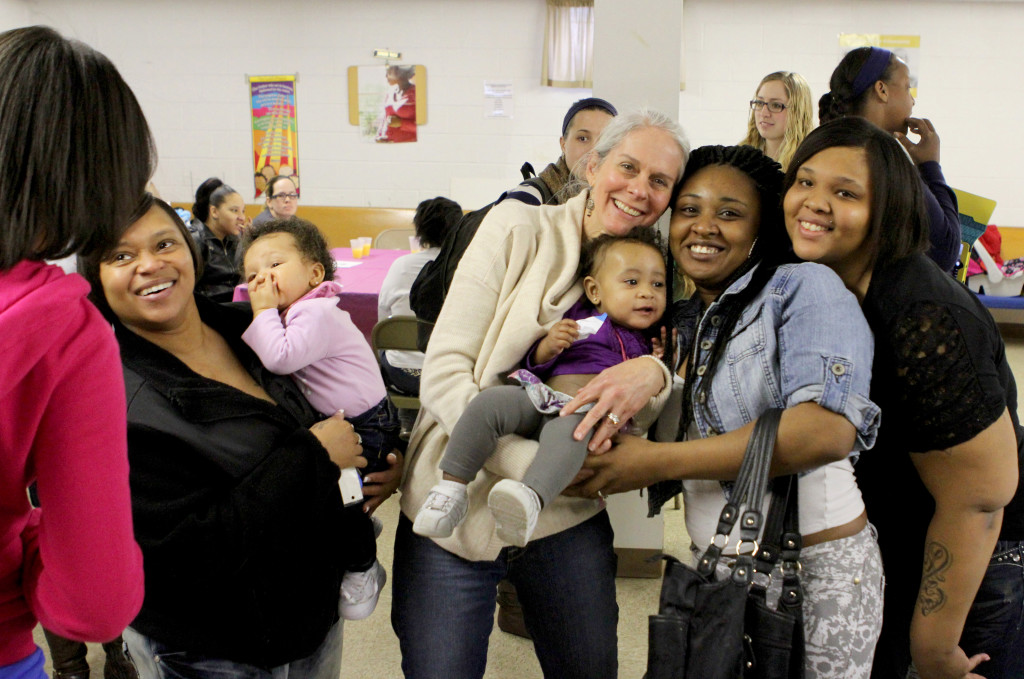
Participants in Weinland Park’s Moms2B program.
For example, one signature program and success story in Weinland Park is Moms2B, a program aimed at improving the health and welfare of low-income pregnant women in Columbus, Ohio and Franklin County. Even as the rate of infant mortality has been declining nationally, infant mortality rates in Ohio and Franklin County have been rising. Disorders related to premature delivery and low-birth weight are the leading causes of death for infants. The program began as a 10-week nutrition course and has since expanded to a comprehensive prenatal program at three locations. The program provides weekly group sessions focused on education, nutrition, clinical, and social support that continues through the baby’s first year of life. The Columbus Foundation has been a major funder in the program and, since its inception, has invested $233,000 in grants to provide continued support. In Franklin County, where Weinland Park is located, the program has reached 216 women and has had major impact. In the five years before Moms2B, Weinland Park had seven infant mortalities, and, in the five years following, only one. Healthy birth weights were up by nearly one pound, safe spacing between births has increased, and the neighborhood is no longer a hot spot of infant mortality.
Another important effort supported by The Columbus Foundation in Weinland Park was to help dramatically expand the availability of affordable housing. Since 2008, more than 500 housing units have been repaired, renovated, or newly built by the Weinland Park Collaborative. Almost all of these units provided a subsidy to the housing consumer.
In one of our more significant projects as part of this effort, we announced in May 2014 a $2 million low-interest loan to help support the $12 million restoration and renovation project now known as Grant Commons. The Foundation provided support to help overhaul 23 buildings, resulting in the renovation of more than 90 vacant housing units, while the City of Columbus added $4.5 million in new infrastructure for new roads, sidewalks, lights, and bicycle lanes.
Additionally, more than 60 existing low-income homeowners received exterior home repair grants to help them stay stable in their homes. Funded by J.P. Morgan Chase, Campus Partners, and The Columbus Foundation, the average grant was $18,500 per home to provide new roofs, windows, siding, and energy-efficient basements among other improvements.
These units represented the largest renovation project in Weinland Park in decades. Although many of these units had earned a designation on the National Register of Historic Places, they were threatened with demolition due to a long period of neglect.
“This project is beneficial because it keeps a large collection of the original historic fabric of the neighborhood intact, in the way it was intended to be,” says Douglas F. Kridler, president and CEO of The Columbus Foundation. “The Foundation and its donors continue to support innovative ideas that strengthen the neighborhood and serve as a point of pride for residents of Weinland Park and the city as a whole.” The Foundation’s loan is a Program Related Investment (PRI), a tool used to provide financial support to nonprofit organizations and programs that generate revenue while still fulfilling a broad community benefit.
Finally, a third project contributing to Weinland Park’s renaissance is The Columbus Foundation’s support of programs to help the community’s at-risk youth stay on track toward success at school. Since 2013, the Foundation has awarded $450,000 in grant support to the Boys & Girls Clubs of Columbus, in partnership with the Godman Guild Association, to launch and operate R.I.S.E. (Resilience, Integrity, Strength, Excellence) at the Boys & Girls Club in Weinland Park.
R.I.S.E. director Mark Lomax recognizes that many members of his afterschool and summer programs, typically ages 12–18, face ongoing issues with family and school. “Most of our members are reading below grade level and are not strong in the science, technology, engineering, and mathematics (STEM) subjects,” Mark explains. “I think this has much to do with the high suspension rates we see and the subsequent disinterest that grows in pre-teens. The more they are away from school, the more unsuccessful they feel.” Created as a drop-in youth program to meet the developmental, social, and academic needs of middle and high school youth, RISE offers kids is a safe place to play and study after school. It’s the first program of its kind in Weinland Park in a generation.
After decades of decay, Weinland Park is well on its way to stability. For 120 years, the neighborhood has had a proud tradition of ethnic and socioeconomic diversity, and today it stands as a national best practice example of inclusive neighborhood revitalization.
Much work is yet to be done, but considerable progress has been made. The success we have achieved to date is due to a diverse group of funders, stakeholders, nonprofits and residents who have come together around a single vision to sustain and improve a vibrant mixed-income and mixed-race neighborhood. This collaboration also illustrates how private foundations and community foundations are working together to tackle a local problem, and put into place programs that offer long-term opportunities for success.
Thanks to the area’s passionate residents, committed stakeholder organizations, and valuable contributions of philanthropy (both in Columbus and in Baltimore), Weinland Park has regained its undeniable spirit.
Michael Wilkos is Director of Community Research at The Columbus Foundation.
More images from Weinland Park:



